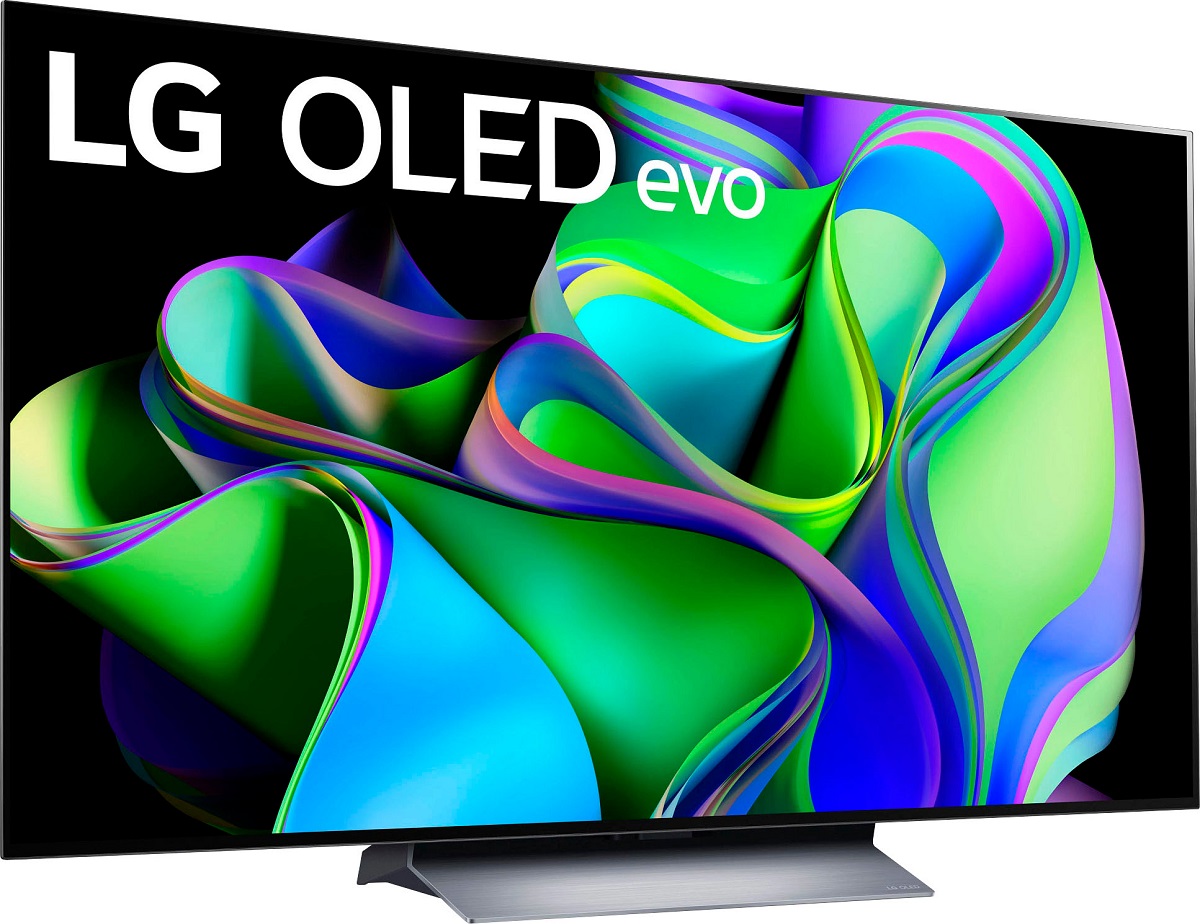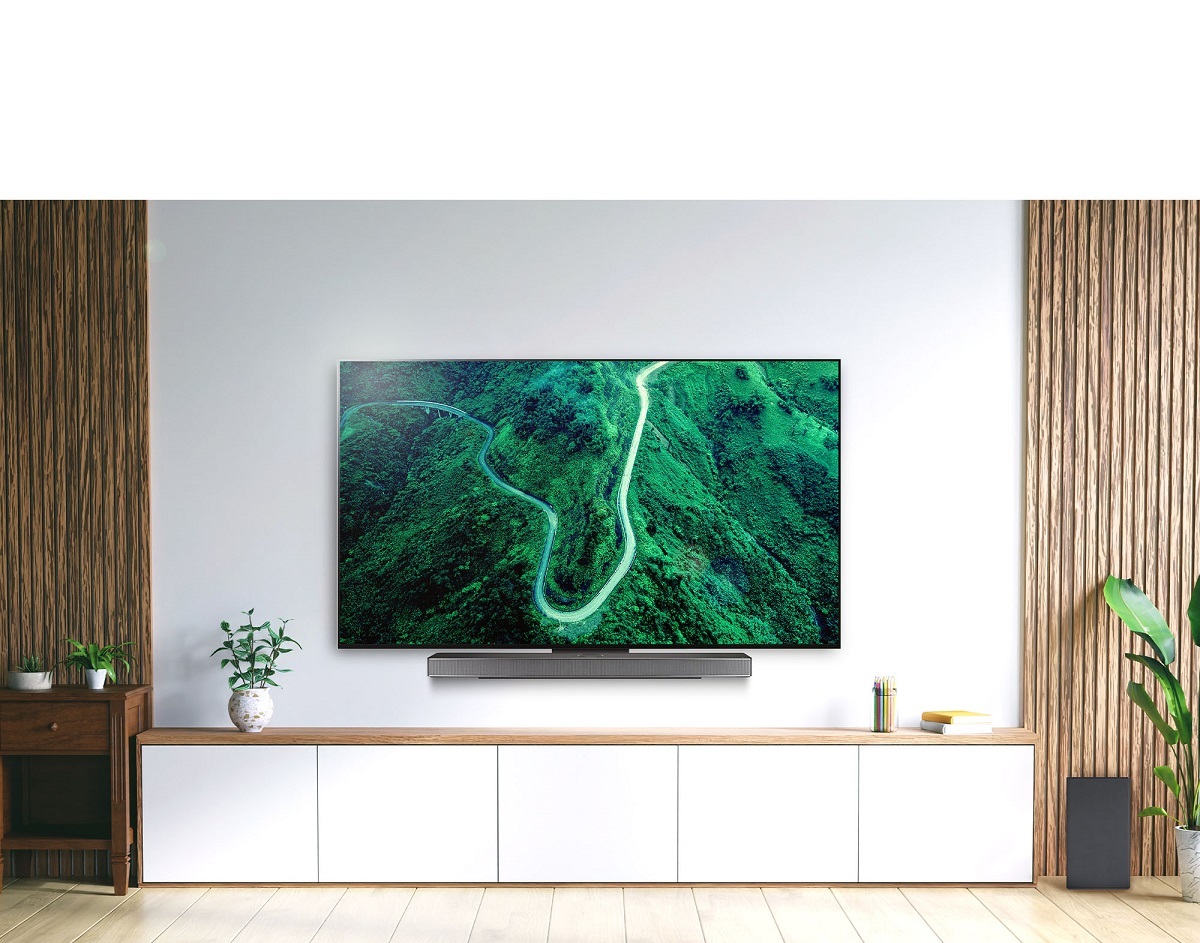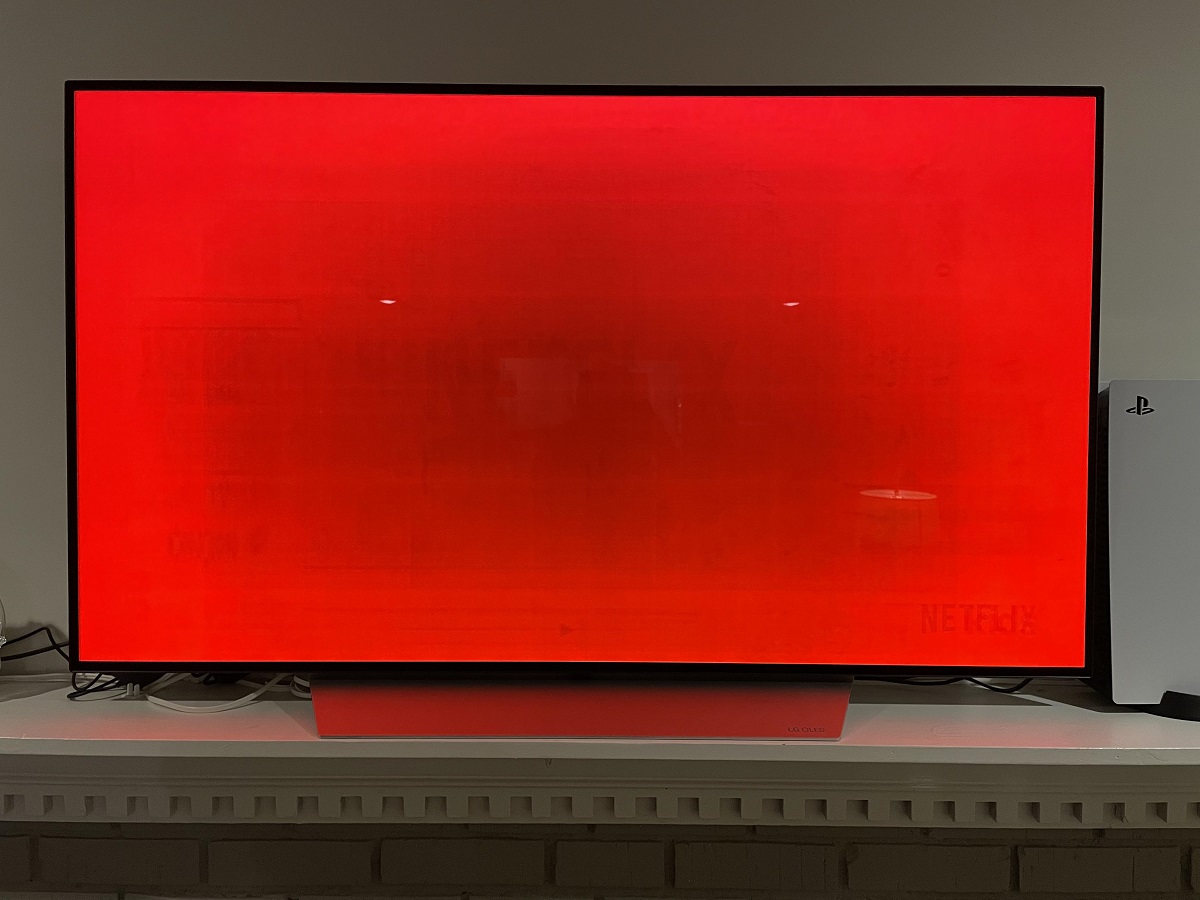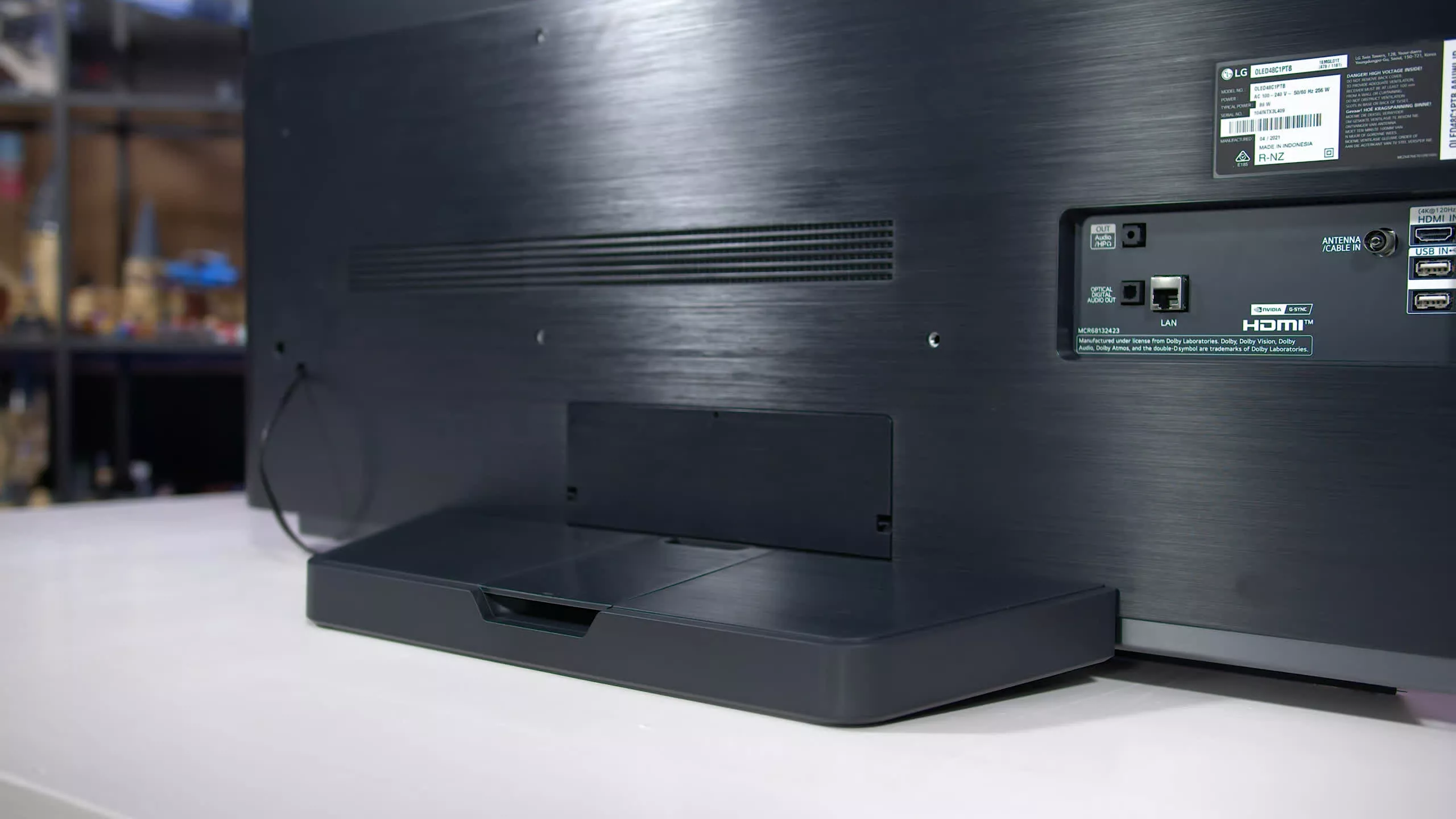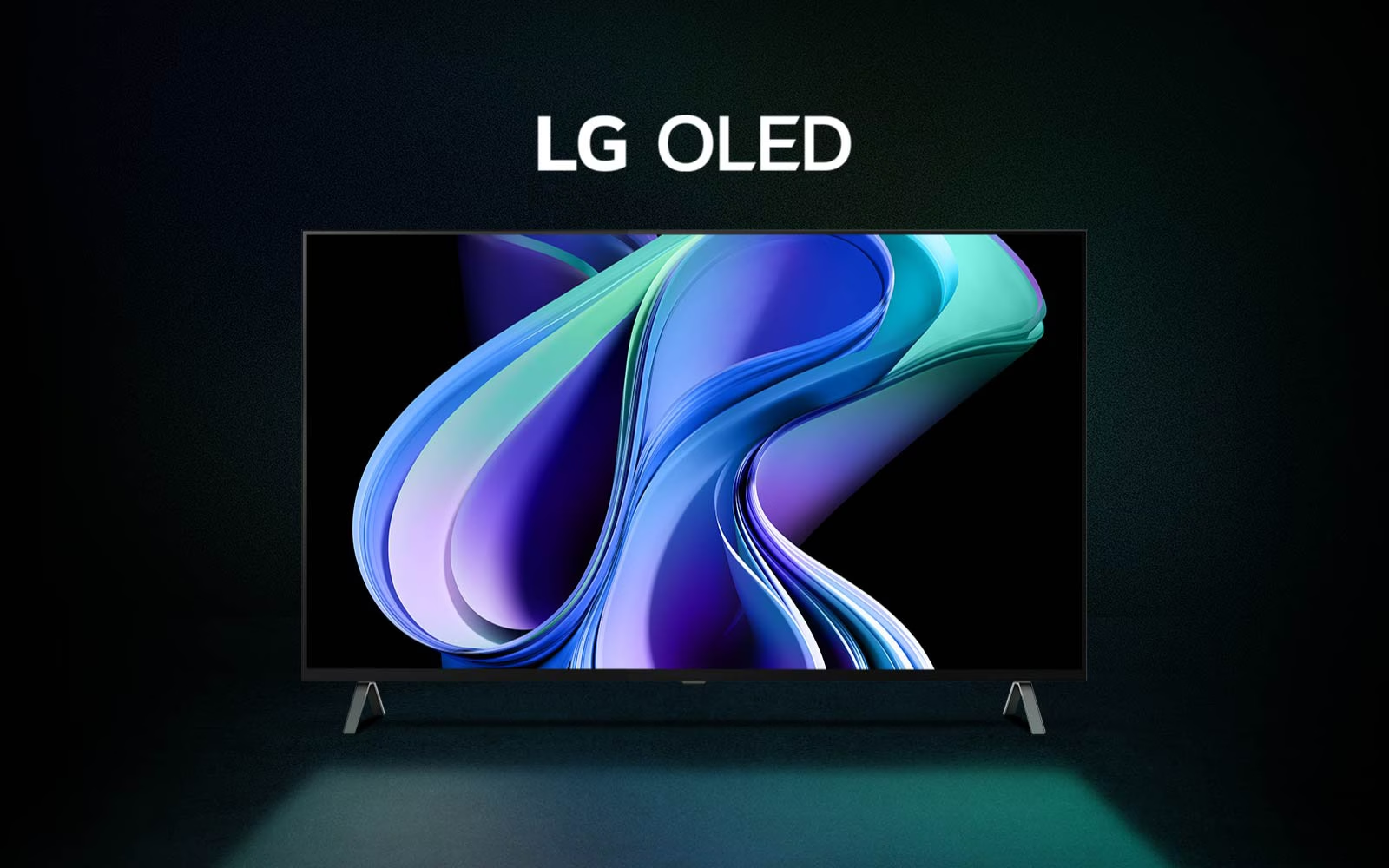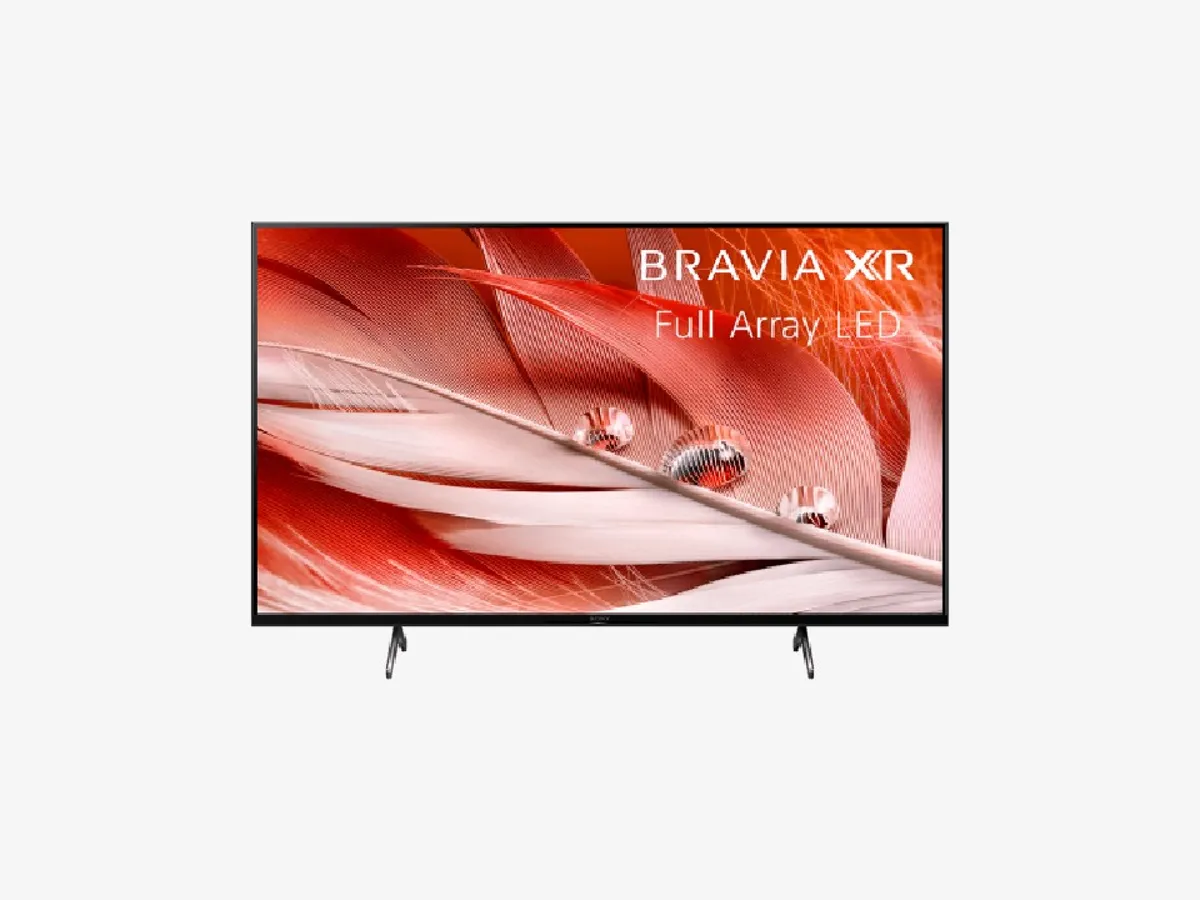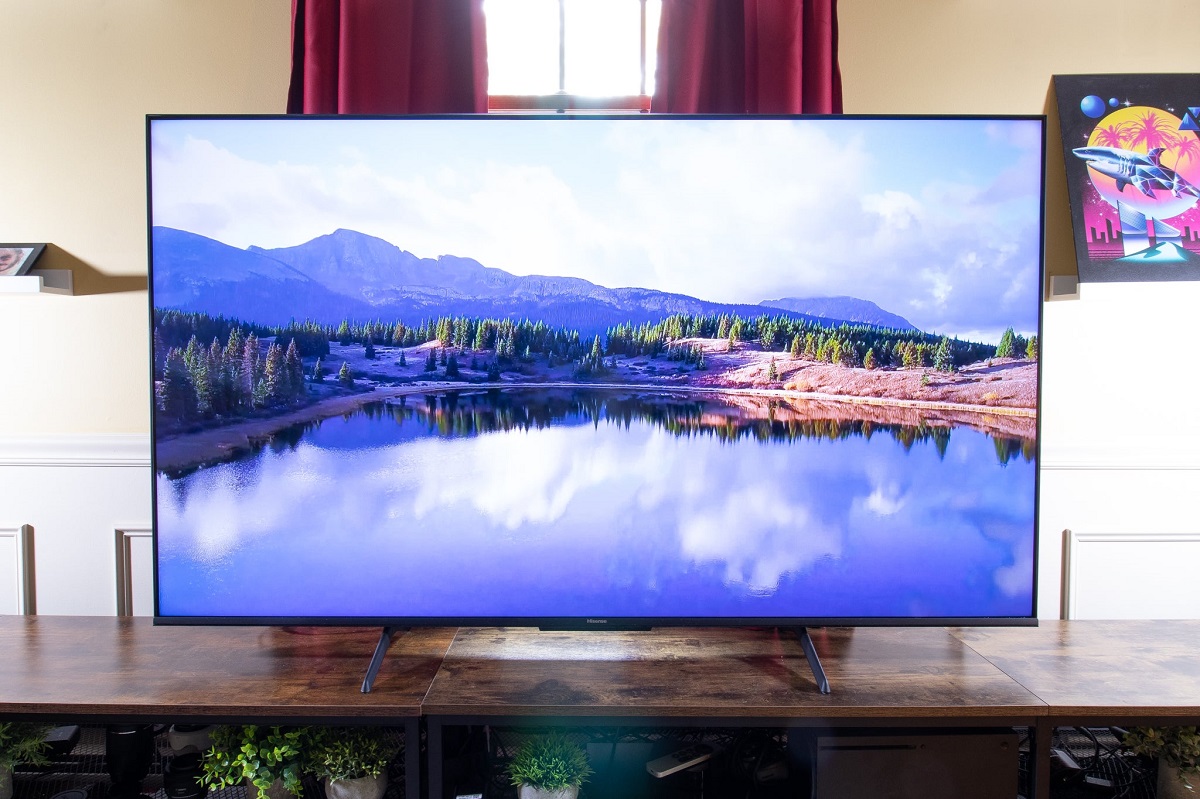Introduction
Welcome to the world of LG OLED TV, where stunning visuals and cutting-edge technology converge to deliver an extraordinary entertainment experience. As an OLED TV owner, you already know that the picture quality is unmatched, with deep blacks, vibrant colors, and incredible detail. However, to truly immerse yourself in your favorite movies, TV shows, and games, audio synchronization is paramount.
Audio synchronization, or syncing, refers to the alignment of audio and video playback. When audio is out of sync, the sound may lag behind the visuals, resulting in an unsettling and disruptive viewing experience. Imagine watching an action-packed scene, only to hear the sound effects a split second later. It can seriously diminish your enjoyment and immersion.
Fortunately, LG OLED TVs offer various methods to ensure perfect audio sync, allowing you to fully appreciate the rich, lifelike visuals without any distractions. In this article, we will explore different ways to sync audio on your LG OLED TV, helping you optimize your viewing experience.
Whether you are a casual viewer or a dedicated cinephile, the information shared here will empower you to take control of your audio settings and enhance your entertainment sessions.
Why Syncing Audio on LG OLED TV is Important
Have you ever experienced that frustrating moment when the audio on your LG OLED TV does not quite match up with the video? It can be incredibly annoying and can significantly impact your overall viewing experience. That is why syncing audio on your LG OLED TV is crucial.
Audio sync ensures that the sound you hear is perfectly aligned with the visuals on the screen. This synchronization enhances immersion and allows for a more realistic and enjoyable entertainment experience. Here are a few reasons why audio syncing is important:
1. Immersion and Enjoyment
When you are watching a movie, TV show, or playing a video game, you want to be fully immersed in the action. Audio that is out of sync can break that sense of immersion and detract from your overall enjoyment. By syncing the audio, you can ensure that every sound effect, dialogue, and musical cue lines up perfectly with what you see on the screen.
2. Attention to Detail
Syncing audio is particularly important for content that heavily relies on sound, such as action movies or suspenseful TV shows. Imagine watching a thrilling car chase scene with screeching tires and roaring engines. If the audio is out of sync, the impact of those sounds will be significantly diminished, and you may miss out on all the intricate details that contribute to the excitement.
3. Dialogue Clarity
Accurate audio syncing is crucial for clear and understandable dialogue. When watching a movie or TV show, it is essential to hear every word spoken by the characters. If the audio is out of sync, it can distort the dialogue, making it challenging to follow the story or understand crucial plot points.
4. Gaming Performance
For gamers, audio sync is equally important. In fast-paced games, such as first-person shooters or racing simulators, audio cues play a vital role in gameplay. Imagine playing a multiplayer online game and hearing footsteps or gunshot sounds out of sync. It can significantly affect your ability to react to in-game events, putting you at a disadvantage.
By ensuring proper audio sync on your LG OLED TV, you can fully appreciate the intricate details, intensify your immersion, and elevate your entertainment experience to new heights. Now that you understand the significance, let us explore different methods to achieve perfect audio sync on your LG OLED TV.
Different Ways to Sync Audio on LG OLED TV
When it comes to syncing audio on your LG OLED TV, you have several options to choose from. Let’s take a look at different methods that can help you achieve perfect audio synchronization:
1. Adjusting Audio Sync Settings on LG OLED TV
The first method is to utilize the built-in audio sync settings on your LG OLED TV. These settings allow you to manually adjust the audio delay to synchronize it with the video playback. To access the audio sync settings, navigate to the TV’s settings menu and look for the audio or sound options. From there, you can fine-tune the audio delay using the available controls. Experiment with different settings until you find the perfect sync for your specific content.
2. Using External Audio Devices
If adjusting the TV’s audio sync settings doesn’t yield satisfactory results, you can consider using external audio devices. For instance, you can connect your LG OLED TV to an AV receiver or soundbar that offers advanced audio synchronization features. These devices often have dedicated settings to adjust the audio delay, allowing you to fine-tune the synchronization to your preference. Make sure to consult the device’s manual or online resources for guidance on adjusting the audio sync settings.
3. Using Audio Delay Apps or Devices
Another option is to utilize audio delay apps or devices. These solutions work by introducing a time delay to the audio signal, compensating for any sync issues. Some smart TVs offer companion apps that allow you to adjust the audio delay directly from your smartphone or tablet. Alternatively, you can use standalone audio delay devices that sit between your LG OLED TV and the audio output, providing precise control over the audio synchronization. Research and explore the available options that are compatible with your TV and audio setup.
It’s worth noting that the effectiveness of these methods may vary depending on the specific model of your LG OLED TV and the audio devices you are using. Experimentation and adjustments may be necessary to achieve the desired audio sync. Additionally, it’s recommended to refer to the user manuals or online resources for detailed instructions on accessing and configuring audio sync settings.
Now that you are familiar with different ways to sync audio on your LG OLED TV, let’s move on to some helpful tips to enhance your audio sync experience.
Method 1: Adjusting Audio Sync Settings on LG OLED TV
One of the primary methods to sync audio on your LG OLED TV is by adjusting the audio sync settings directly on the TV. This method allows you to fine-tune the audio delay to achieve perfect synchronization with the video playback. Here’s how you can do it:
Step 1: Access the Audio Settings Menu
Using your LG OLED TV remote, navigate to the settings menu. Look for the audio or sound options. The exact location of these settings may vary depending on your TV model and the user interface, but it is generally found under the “Settings” or “Audio” section.
Step 2: Locate the Audio Sync Setting
Within the audio settings menu, locate the audio sync or audio delay setting. LG OLED TVs typically offer this option to adjust the synchronization between audio and video playback. It may be labelled as “Audio Sync,” “AV Sync,” or “Audio Delay,” among other variations.
Step 3: Adjust the Audio Sync Setting
Once you’ve found the audio sync setting, you can use the provided controls to adjust the delay. The options may include positive and negative values to increase or decrease the delay, respectively. Experiment with different settings and test them with various content, such as movies, TV shows, or games, to find the optimal audio sync for each type of media.
Step 4: Test and Fine-tune
After adjusting the audio sync setting, it’s essential to test the results. Play media that have previously experienced audio syncing issues, and observe if the audio now matches the video correctly. If necessary, continue fine-tuning the delay until you achieve seamless synchronization. Remember that different content may require slight adjustments, so it’s beneficial to periodically check and readjust the settings as needed.
It’s important to note that the availability and functionality of audio sync settings may vary across different LG OLED TV models. Refer to your TV’s user manual or consult the manufacturer’s website for specific instructions and guidance on accessing and adjusting these settings.
Now that you are familiar with the first method of adjusting audio sync settings on your LG OLED TV, let’s move on to explore another approach using external audio devices.
Method 2: Using External Audio Devices
If adjusting the audio sync settings on your LG OLED TV does not yield satisfactory results, you can consider utilizing external audio devices to achieve perfect audio synchronization. These devices offer advanced features specifically designed for audio delay adjustment. Here’s how you can use external audio devices to sync audio on your LG OLED TV:
Step 1: Connect an External Audio Device
Start by connecting an external audio device, such as an AV receiver or a soundbar, to your LG OLED TV. Use the appropriate audio input/output ports, such as HDMI ARC, optical, or RCA cables, depending on the device and TV model. Refer to the user manuals of both your TV and the audio device for specific connection instructions.
Step 2: Access the Audio Settings on the External Device
Once the external audio device is connected, you will need to access its audio settings menu. This can usually be done by using the device’s remote control. Look for options related to audio delay, audio sync, or lip-sync adjustment. The specific terminology used may vary depending on the device’s brand and model. Consult the user manual or online resources provided by the manufacturer for detailed instructions on accessing these settings.
Step 3: Adjust the Audio Delay
Within the audio settings menu of the external audio device, locate and adjust the audio delay or audio sync setting. Similar to adjusting the TV’s audio sync settings, you can typically increase or decrease the delay value using the available controls. By fine-tuning this setting, you can synchronize the audio playback with the video on your LG OLED TV.
Step 4: Test and Fine-tune the Settings
After making adjustments to the audio delay on the external device, play media that previously exhibited audio syncing issues on your LG OLED TV. Observe if the audio now matches the video seamlessly. If needed, continue to fine-tune the delay settings until the audio synchronization is perfect for your specific content and preferences.
Remember to consult the user manual and online resources for your specific external audio device to ensure you have access to all the necessary settings and adjustments for audio synchronization.
By using external audio devices with dedicated audio delay settings, you have additional control and flexibility to achieve optimal audio synchronization on your LG OLED TV. In the next section, we will explore another method that involves using audio delay apps or devices for synchronizing audio.
Method 3: Using Audio Delay Apps or Devices
Another effective approach to sync audio on your LG OLED TV is by utilizing audio delay apps or devices. These solutions introduce a time delay to the audio signal, compensating for any sync issues that may arise. Here’s how you can use audio delay apps or devices for audio synchronization:
Step 1: Research and Identify Compatible Apps or Devices
Start by researching and identifying audio delay apps or devices that are compatible with your LG OLED TV. Check app stores or online marketplaces for apps designed specifically to adjust audio delays on smart TVs. Alternatively, look for dedicated audio delay devices that can be connected between your TV and audio output. Ensure that the app or device you choose is compatible with your specific TV model and audio setup.
Step 2: Install and Set Up the App or Device
If utilizing an audio delay app, download it onto your smartphone or tablet. Follow the installation instructions provided, which may include connecting your device to your LG OLED TV through an established network connection. If using a standalone audio delay device, connect it between your TV and audio output using the appropriate cables.
Step 3: Adjust the Audio Delay
Once the app or device is properly set up, access the audio delay settings. Follow the instructions provided with the app or device to adjust the audio delay to your desired synchronization level. The settings may allow you to increase or decrease the delay to achieve perfect audio sync with the video playback on your LG OLED TV.
Step 4: Test and Fine-tune the Settings
After adjusting the audio delay, play media that previously exhibited audio syncing issues. Observe if the audio now matches the video seamlessly. If necessary, continue to fine-tune the settings until the audio synchronization is accurate for your specific content and preferences.
It’s important to note that the effectiveness and functionality of audio delay apps or devices may vary. Some may offer more advanced features for precise synchronization control, while others may have limitations. Additionally, make sure to refer to the user manuals or online resources provided by the app or device manufacturer for specific instructions and guidance.
Now that you are familiar with using audio delay apps or devices, you have another method to achieve perfect audio sync on your LG OLED TV. In the next section, we will share some valuable tips to improve your audio sync experience.
Tips for Better Audio Sync on LG OLED TV
While adjusting audio sync settings and utilizing external devices or apps can significantly improve audio synchronization on your LG OLED TV, here are some additional tips to enhance your audio sync experience:
1. Update Firmware and Software
Ensure that your LG OLED TV’s firmware and any connected audio devices or apps are up to date. Manufacturers often release updates that address performance issues, including audio sync improvements. Check for updates regularly and install them to ensure optimal performance.
2. Use High-Quality Cables
Make sure you are using high-quality cables to connect your LG OLED TV to external audio devices. Inferior or damaged cables can introduce delays or signal degradation, affecting audio sync. Choosing reliable and well-constructed cables will help maintain a strong and stable connection.
3. Minimize Signal Processing
Some LG OLED TVs offer various image processing features that can enhance picture quality but may introduce audio delays. If you notice significant audio sync issues, try disabling or minimizing these features, such as motion smoothing or noise reduction, to reduce processing time and improve audio synchronization.
4. Calibrate Audio and Video Settings
Take advantage of your LG OLED TV’s calibration options to fine-tune the audio and video settings. Adjusting aspects such as audio equalization or picture settings can help achieve better synchronization. Experiment with different settings to find the optimal balance for your preferences.
5. Position Your Speakers Correctly
If you are using external speakers or a sound system, ensure they are positioned correctly and aligned with your TV screen. Proper speaker placement can help improve audio synchronization by reducing echo or phase cancellation caused by sound reflections.
6. Test Content Variations
Keep in mind that audio sync issues may vary across different types of media. Test various types of content, such as movies, TV shows, or games, to identify any specific patterns or inconsistencies. Adjust the audio sync settings accordingly to achieve the best synchronization for each type of media.
7. Consult the User Manual
For specific guidance on audio sync settings, troubleshooting, and optimization on your LG OLED TV model, refer to the user manual provided by the manufacturer. The manual may include additional tips and recommendations tailored to your TV’s features and capabilities.
By implementing these tips, you can further enhance audio synchronization on your LG OLED TV, ensuring a more immersive and enjoyable entertainment experience.
Conclusion
As an owner of an LG OLED TV, achieving perfect audio synchronization is essential for an immersive and enjoyable entertainment experience. Whether you’re watching movies, TV shows, or playing video games, audio sync ensures that the sound and visuals are perfectly aligned, enhancing immersion and attention to detail.
In this article, we explored different methods to sync audio on your LG OLED TV. Starting with adjusting the audio sync settings directly on the TV, you have the flexibility to fine-tune the delay and achieve synchronization that suits your content and preferences. If necessary, you can also utilize external audio devices, such as AV receivers or soundbars, which offer advanced audio delay options for precise adjustments.
Furthermore, you can consider using audio delay apps or devices to compensate for any sync issues. These solutions provide additional control and flexibility to achieve optimal audio synchronization on your LG OLED TV. It’s important to research and choose compatible apps or devices that cater to your specific TV model and audio setup.
Additionally, we shared tips for better audio sync, including keeping firmware and software updated, using high-quality cables, minimizing signal processing, calibrating audio and video settings, positioning speakers correctly, testing content variations, and consulting the user manual for specific guidance.
By following these methods and implementing the tips, you can enhance your audio sync experience and unlock the full potential of your LG OLED TV. Enjoy seamless audio synchronization and immerse yourself in the captivating world of entertainment.







